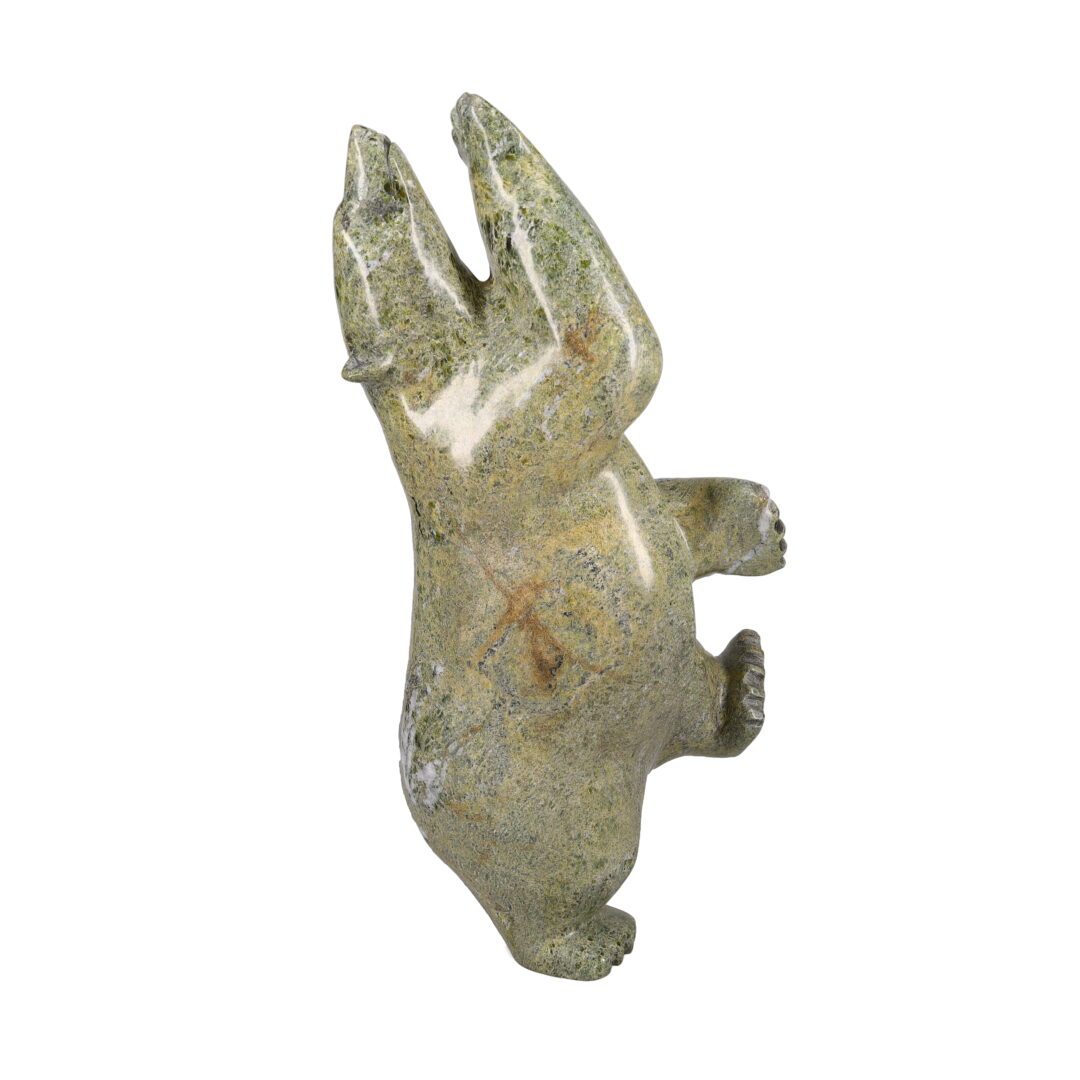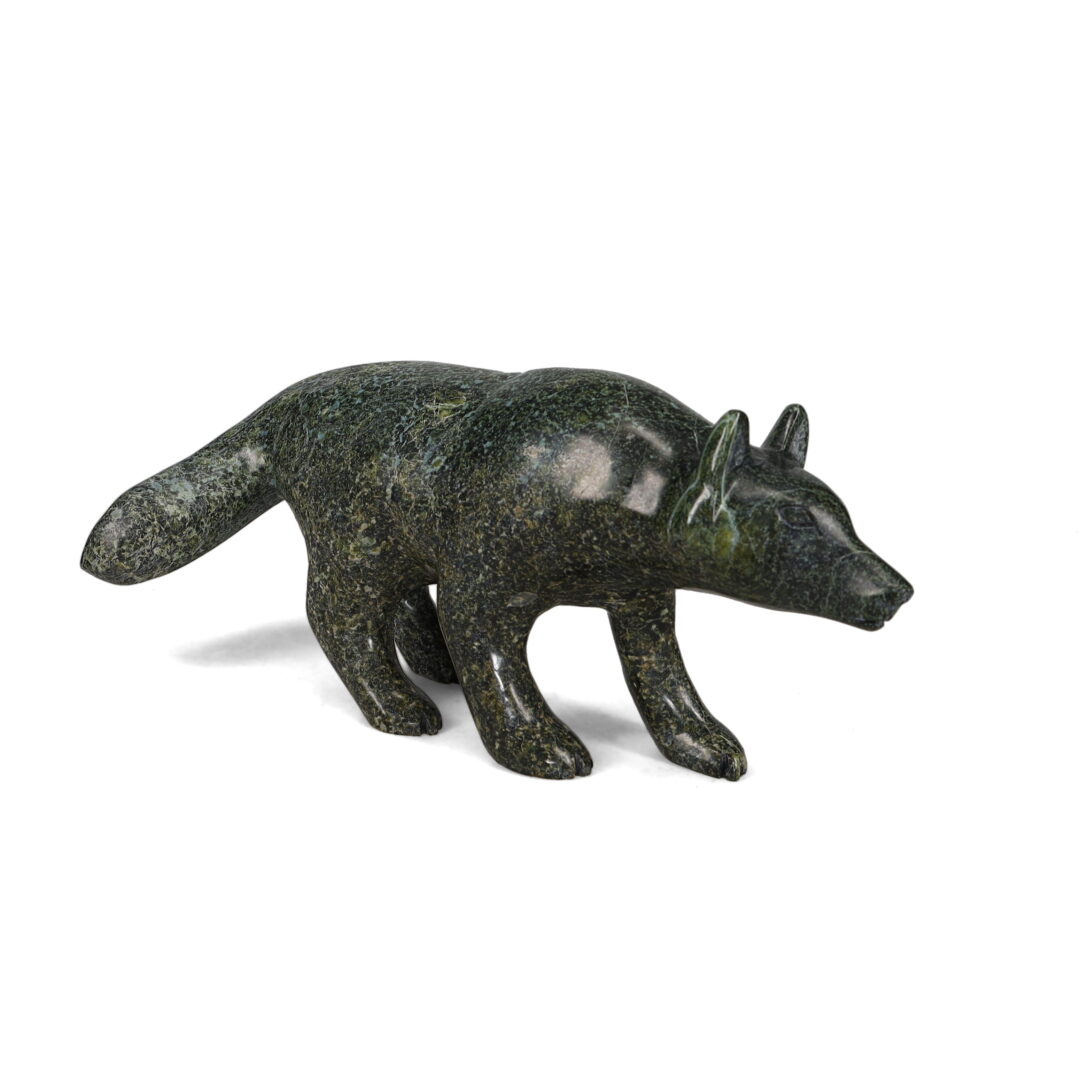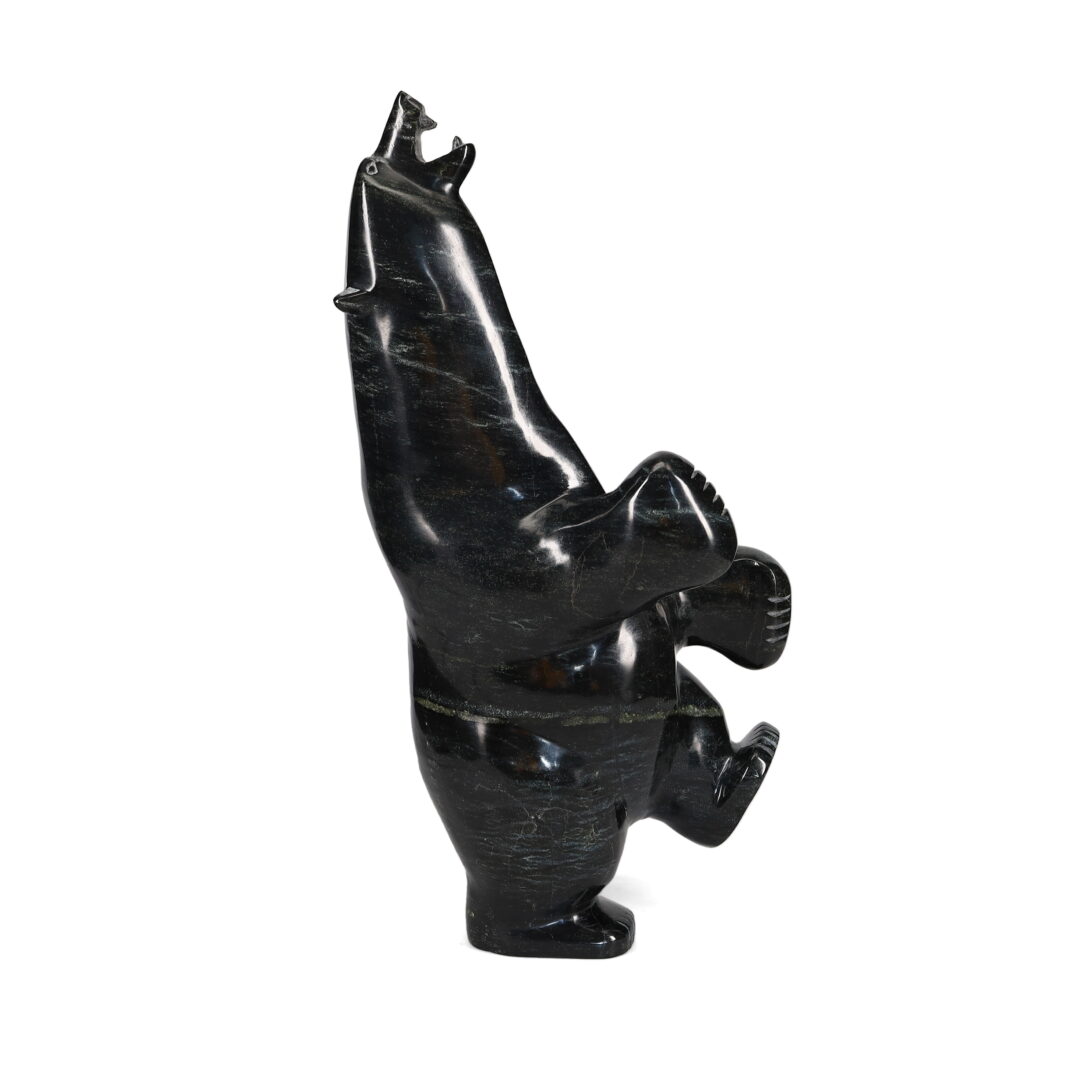Matthew Flaherty

Born: February 13, 1998
Place of Birth: Iqaluit, Nunavut
Resides: Kinngait, Nunavut (Cape Dorset)
Matthew Flaherty was born in 1998 in Iqaluit. He grew up in Grise Ford, also known as Aujuittuq (Inuktitut version) which can be translated as “the place that never thaws” situated on the south of Ellesmere Island, which happens to be the northernmost public community in Canada. In the 2021 Canadian census, its population was found to be of 144 inhabitants. It is also one of the coldest regions of the world.
Matthew carved his first sculpture at the age of seven. It was of a polar bear. He is a keen observer of nature and loves to create drawings and paintings. His carvings of bears are distinct, and these days, he is mostly known for his wonderful carvings of wolves and dogs, which are known to represents strong values of loyalty, family, communication, and teaching. The canine family has been extremely significant for the Inuit people, and it is doubtful that they would have survived the harsh conditions without their beloved canine companions, known as “Qimmiq” (“dog”) and to non-Inuktitut speakers as the Canadian Eskimo Dog.
Matthew was inspired and encouraged by notable artists of his community but does not come from a family of artists. While he is largely self-taught, he was influenced by the distinguished Grise Fiord artist Looty Pijamini. And even though Mathew was not born into an artistic family like many Inuit artists, he is a distant relative of the famous filmmaker Robert Flaherty who directed and produced the first commercially successful feature-length documentary film, Nanook of the North in 1922.
The artist moved to Kinngait (formerly known as Cape Dorset) in 2019 to develop his skills. There, he met and trained with the renowned Parr Parr.




